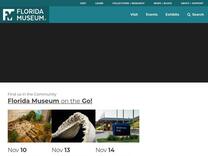Reptiles + Amphibians – Rare, Beautiful & Fascinating: 100 Years @FloridaMuseum https://www.floridamuseum.ufl.edu/100-years/tags/reptiles-amphibians/
Florida Museum of Natural History
fossil is the largest freshwater turtle species found from the Paleocene (66–56 million

